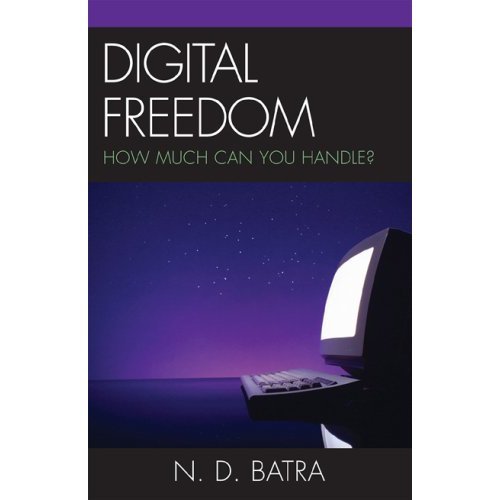Telepresence: Being there when you’re not there
I don’t know whether it would help us make a better sense of the world, whether it would improve our awareness and responsiveness to the human condition if we were able to surf the Web through eyeglasses or do instant messaging through picture cellphones. Nevertheless, the desktop is becoming mobile and ubiquitous as wireless computer chips get embedded into various devices. Wireless global networks are collapsing space and time, turning geographic space into cyberspace, and are bringing people together through telepresence for collaboration and competition in the workplace and cultural space. The experience of the presence of others in a virtual environment created by networked communication is called telepresence. “Bombay Dreams” are made of Silicon Valley and American jobs are exported to India, thus laments Lou Dobbs of CNN, fearing the loss of American dominance in the rising tide of the digital civilization. It is not his daddy’s world any more.
Every human activity from pornography to the most complex mathematical hypothesis is nothing but information in the binary format. Every human activity that takes place in an analogue world can be turned into digital data, a binary mathematical code of 0s and 1s, off-on signals, and can instantly be distributed globally through computer networks, thus extending the reach of human communication—for good or evil. Digital data can not only be stored and retrieved instantly anywhere but they can also be transformed into predictive intelligence about human behavior regarding commerce, national security or any other social or political activity. Books, music files, love bugs or terrorist messages, for example, become indistinguishable as they converge in a digital stream and surge through cyberspace. They can be transmitted and distribute instantly and much less expensively than in the analogue world.
Convergence, instantaneity and feedback interactivity make the Internet the most powerful medium of communication ever developed. Since the traditional media including books, television, newspapers, magazines, radio, music and interpersonal communication (instant messaging) are converging on the Internet as a multimedia stream into which anyone can plug in, their power increases manifold and in ways whose implications we still don’t understand. Outsourcing, for example, has given India a constant state of telepresence in the American political and corporate discourse. Unlike the offshoring of manufacturing, outsourcing of research and development and other forms of intellectual and professional work is bringing India and the United states into a cyberspace domain where brainpower and creativity could be shared and enhanced. The Internet thus is revolutionary in the sense that it is lowering barriers for fusion and transfusion of cultures.
The Canadian scholar Herald Innis wrote in his seminal book, The Bias of Communication (1951), that a new medium of communication creates a specific cultural shift and changes our concept of space and time, with tremendous cultural consequences. “A medium of communication has an important influence on the dissemination of knowledge over space and time and it becomes necessary to study its characteristics in order to appraise its influence in its cultural setting.” Although ancient people tried to abridge space and time by sending messages especially in wartime through drums and smoke signals, not until the invention of telegraph was it possible to think about communication in terms other than transportation. Like goods, messages were communicated from place to place at a speed that the best transportation system of the time, for example, the pony express or the railroad made it possible. Telegraph altered the geography-based metaphor of communication, which ceased to be synonymous with transportation. As telegraph triggered the development of new technologies in the early part of the 20th century, as telephone, radio, and television became ubiquitous, communication became increasingly footloose, liberated from the constraints of space and time. Computer networks and the Internet have further altered our view of space and time. A networked organization or an individual with instant messaging and e-mail has different feel of space and time than the people of the pre-digital era. The keyboard is the door to cyberspace and once you are there, you are simultaneously in a synchronous and asynchronous world, a world that gives a greater illusion of freedom and control than the real world. But the keyboard is a clumsy device and in fact a handicap for seamless communication. Its era is coming to an end.
Cyberspace was first coined by William Gibson in Neuromancer (1984) to describe a world in which computers in symbiosis with human nervous system create a virtual world. Today cyberspace has become a multi-dimensional universe in which multimedia graphics, information and telepresence create activities that are as real as they are in physical space. Telepresence, for example, could enable a Boston surgeon to remotely control a robot to perform surgery in Kolkata; or a group of business executives in Bangalore and Boston to execute a business plan, an example of space, time and brainpower working in tandem. Terrorists could do the same.
Among the rising cyber class in the United States, there’s a widespread awareness that the new decentered networked space that hovers over the geographic space is no less real. For example, if you buy a Music CD at e-Bay, Amazon.com or iTunes, it is no less real than going to Wal-Mart or a corner music store. The dilemma is that as more and more people experience activities in cyberspace through telepresence, they are not sure what is private and what is public; what is American and what is un-American; and what to do about it.
Tuesday, September 21, 2004
Being there when you are not there
at Tuesday, September 21, 2004 Posted by Narain D. Batra
Subscribe to:
Post Comments (Atom)

No comments:
Post a Comment